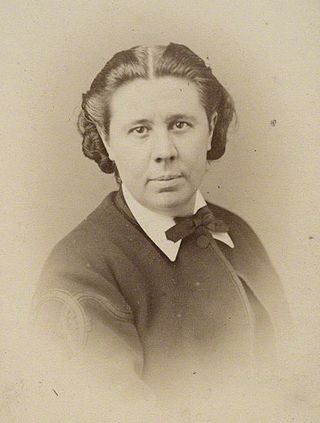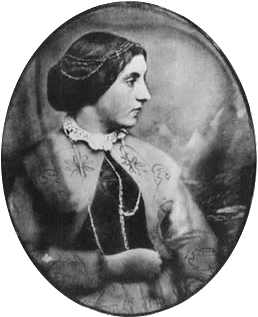Related Research Articles

A Room of One's Own is an extended essay by Virginia Woolf, first published in September 1929. The work is based on two lectures Woolf delivered in October 1928 at Newnham College and Girton College, women's colleges at the University of Cambridge.

Alan StevensonFRSE MInstCE was a Scottish civil engineer, known for designing and building lighthouses in and around Scotland.

Bedford College was founded in London in 1849 as the first higher education college for women in the United Kingdom. In 1900, it became a constituent of the University of London. Having played a leading role in the advancement of women in higher education and public life in general, it became fully coeducational in the 1960s. In 1985, Bedford College merged with Royal Holloway College, another constituent of the University of London, to form Royal Holloway and Bedford New College. This remains the official name, but it is commonly called Royal Holloway, University of London (RHUL).

Tales from Shakespeare is an English children's book written by the siblings Charles and Mary Lamb in 1807, intended "for the use of young persons" while retaining as much Shakespearean language as possible. Mary Lamb was responsible for retelling the comedies and Charles the tragedies. They omitted the more complex historical tales, including all Roman plays, and modified those they chose to retell in a manner sensitive to the needs of young children, but without resorting to actual censoring. However, subplots and sexual references were removed. They wrote the preface together.
Women as theological figures have played a significant role in the development of various religions and religious hierarchies.

Emily Faithfull was an English women's rights activist who set up the Victoria Press to publish the English Woman's Journal.

Alice Mona Alison Caird was an English novelist and essayist. Her feminist writings and views caused controversy in the late 19th century. She also advocated for animal rights and civil liberties, and contributed to advancing the interests of the New Woman in the public sphere.

Anne Bannerman was a Scottish poet. She was part of the Edinburgh literary circle which included John Leyden, Jessie Stewart, Thomas Campbell, and Robert Anderson. Her work was popular in her lifetime and "remains significant for her Gothic ballads, as well as for her innovative sonnet series and her bold original odes."

Margaret Bayard Smith was an American author and political commentator in the early Republic of the United States, a time when women generally lived within strict gender roles. Her writings and relationships shaped both politics and society in the capital of early Washington, DC. Her literary reputation is based primarily on a collection of her letters and notebooks written from 1800 to 1841, and published posthumously in 1906 as The First Forty Years of Washington Society, edited by Gaillard Hunt.

Elizabeth Thomas was a British poet and letter writer. She was part of an important artistic group in London and John Dryden named her "Corinna". However, she suffered from lifelong financial precarity, romantic disappointment, and latterly, health problems. Her reputation was damaged by Alexander Pope and she spent three years in a debtor's prison near the end of her life.

Jane Wells Webb Loudon was an English author and early pioneer of science fiction. She wrote before the term was coined, and was discussed for a century as a writer of Gothic fiction, fantasy or horror. She also created the first popular gardening manuals, as opposed to specialist horticultural works, reframing the art of gardening as fit for young women. She was married to the well-known horticulturalist John Claudius Loudon, and they wrote some books together, as well as her own very successful series.
Charlotte Badger was a former convict who was on board the Venus during a mutiny in Tasmania in 1806. Taken to New Zealand, she was rescued by Captain Turnbull of the Indispensible, and eventually she returned to Sydney. In the intervening centuries, a number of writers have contributed to the fiction that she took an active role in the mutiny and she became known – erroneously – as Australia's first female pirate.

Matilda Mary Hays was a 19th-century English writer, journalist and part-time actress. With Elizabeth Ashurst, Hays translated several of George Sand's works into English. She co-founded the English Woman's Journal. Her love interests included the actress Charlotte Cushman, with whom she had a 10-year relationship, and the poet Adelaide Anne Procter.

Eliza Orme, also called Elizabeth Orme was the first woman to earn a law degree in England, from University College London in 1888.

Flora Masson RRC was a Scottish-born nurse, suffragist, writer and editor.
Emma Robinson was an English writer. All of her works were published anonymously or using pseudonyms.
References
- ↑ "Register | findmypast.com". search.findmypast.com. Retrieved 17 February 2017.
- ↑ "Register | findmypast.com". search.findmypast.com. Retrieved 17 February 2017.
- ↑ Hanks, Patrick, Coates, Richard and McClure, Peter (2016). Oxford Dictionary of Family Names in Britain and Ireland. Oxford University Press. pp. 2, 247.
{{cite book}}: CS1 maint: multiple names: authors list (link) - ↑ Lamb, Anne Richelieu (1844). Can Women Regenerate Society?. London: Harrison and Co., Printers.
- ↑ Rendall, Jane (1984). Great Britain: feminist politics and the politics of class. New York: Schocken Book.